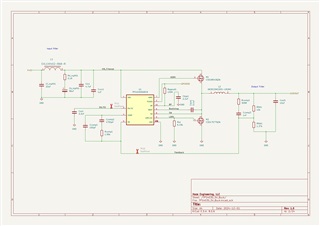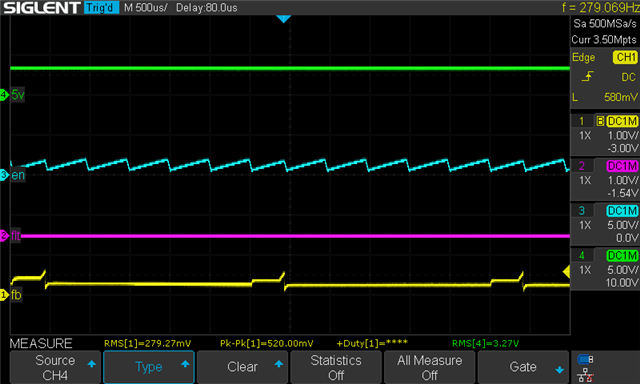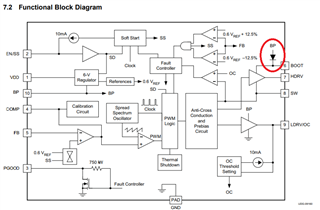Other Parts Discussed in Thread: CSD18543Q3A
Tool/software:
I'm currently working on a USB hub that utilizes a TPS40305 to regulate the 5V bus voltage from a 12V input. I got the design from WEBENCH, with an IOUT Nominal of 10A. The main modification I made was using PGOOD to enable a 3.3V LDO for the hub IC, however looking back at my design, it also looks like the FETs are slightly different (looking around at other designs on the forum I'm seeing issues with high gate capacitance and this controller.

After running for a few minutes with a 2A load, the output shuts off, and it seems like the controller can't initialize. EN ramps up repeatedly, and the feedback pin just has an occasional "blip". Can anyone point me towards what might be happening here? I'm having difficulty recovering boards by resoldering the 40305, and I'm not sure what I should be looking for to pin down and eliminate this issue
Just to add- I removed the output to confirm that the issue wasn't load related, and the behavior persists


